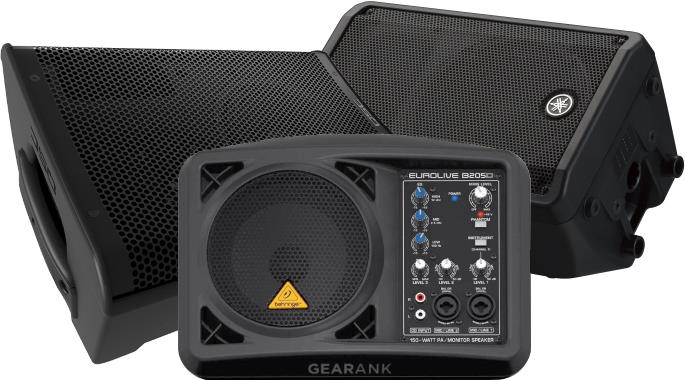
Here are the best stage monitors available and the key features that make them market favorites.
Stage monitors provide us with another set of ears. It gives you confidence in what you’re playing, and it certainly can spell the difference between good and bad gigs. The more experienced you are, the more you require good stage monitor speakers that faithfully translate the nuances of what you’re playing.
Disclosure
We recommend all products independently of 3rd parties including advertisers. We earn advertising fees from:
• • • • •

• • • • •
Amazon
As an Amazon Associate we earn from qualifying purchases.
• • • • •
PA System Guides
We have a range of guides related to PA systems which you will find helpful:
In this 2024 lineup, we’ve searched far and wide to qualify some of the best stage monitors at an affordable price point. We give you some comprehensive insights related to where they shine, what their limitations are, as well as what could be improved.
Knowing all these things would give you some semblance of how they interface with your new or current setup.
The selections here span a range of features and price points, making it feasible to invest in multiple units, even when working within a budget.
While in-ear monitors, as outlined in our Wireless In-Ear Monitors guide, offer a quieter alternative for stage monitoring with enhanced isolation and volume control, it’s essential to acknowledge that floor monitors possess a unique ability to displace air, a quality unattainable by in-ear alternatives.
The Best Stage Monitors Under $500 – 2024
| Gearank* | SRC* | Check Price | ||||||
|---|---|---|---|---|---|---|---|---|
| Best Powered Stage Monitor Speakers under $300 | ||||||||
 | Roland CM-30 CUBE | 92 | 650+ | |||||
 | Behringer Eurolive B205D 5.25” | 91 | 2100+ | |||||
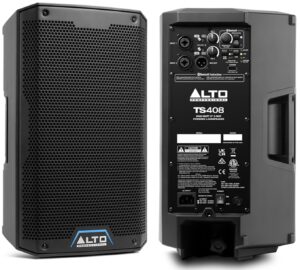 | Alto Professional TS408 | 92 | 200+ | |||||
| Best Powered Stage Monitor Speakers under $500 | ||||||||
 | QSC CP8 | 97 | 250+ | |||||
 | Yamaha DBR10 | 95 | 350+ | |||||
 | Yamaha DBR12 | 95 | 300+ | |||||
Best Powered Stage Monitor Speakers Under $300
These are market-leading powered speakers that are highly rated as floor monitors in the sub $300 price range. It is also worth mentioning that these stage monitors can also be used as high-quality front-of-house (FOH) speakers.
Roland CM-30 CUBE
Cons
- Can't be used as a floor wedge
- Cranking the low EQ will introduce distortion
Pros
- Packs a punch for its size
- Very roadworthy construction
- Clear frequency response
Roland's CM-30 Cube Monitor, a 30W powerhouse, boasts a resilient 6.5" coaxial 2-way speaker with an integrated stereo preamp. Initially intended for home studios and versatile monitoring, it's also a fitting choice for live stage performances.
This monitor speaker accommodates up to five simultaneous sources across its three input channels, including XLR (Mic input), AUX RCA, and stereo mini-phone inputs. The Stereo Link function allows for true stereo output, increasing the inputs to ten.
With its user-friendly 2-band equalizer, convenient handling, metal grille cover, and corner protectors, this monitor is designed for portability and durability, making it a superb audio companion.
In terms of performance, the Roland CM-30 impressively maintains distortion-free audio even at elevated volume levels, demonstrating the efficiency of its design. Despite its modest size, it packs a considerable sonic punch.
The monitor's construction integrates protective elements, such as a robust metal grille cover and corner guards. At the same time, the rear input/output configuration keeps the front panel clutter-free for a clean setup.
Nonetheless, it's important to note that the non-angled design of the CM-30 limits its use as a floor monitor, making it better suited for placement on a table or stand.
Users should exercise caution when pushing the low EQ to its maximum setting, as this may result in distortion, particularly for those seeking extreme low-end adjustments.
Tech Specs
- LF Driver: 12"
- Power Rating (RMS): 30W
- Power Rating (Peak): 30W
- Inputs: 4 x 1/4"" (2 x stereo), 1 x XLR (mic), 1 x 1/4"" (line), 1 x Dual RCA Stereo, 1 x 1/8"" (Stereo), 1 x 1/8"" (stereo)
- Outputs: 2 x 1/4"" TS (L/R)
- Mounting: Pole, Floor
- Weight: 12.37 lbs.
Behringer Eurolive B205D 5.25”
Cons
- Noticeable distortion at high volume.
- No DSP. Lacks effects like reverbs and delays.
- Compatibility issues with adapters, microphone stand. A bit tedious to set up.
Pros
- Adequate loudness for small venues and rehearsals, clear sound quality
- Lightweight, has basic EQ functions, and multiple inputs for various applications.
- Customization of the setup with switchable jack for disconnecting onboard speaker when extension is connected.
- Allows for versatile speaker configurations.
Among the best stage monitor speakers here, Behringer has done a great job tapping into the entry-level speaker market.
They can be used as a monitor, as well as a main speaker for those who want their personal PA system. It has enough loudness that can deliver good sound--portable yet can still reach a maximum peak of 112dB SPL.
Just like any other speakers you can use a pole mount or place it on the ground as a wedge monitor. For buskers and musicians who travel, you have 2 inputs for mics and guitars with DI boxes. Both inputs are a MIC/LINE combo connector and RCA cables for connecting CDs or hooking up devices with headphone jacks.
Since this speaker is relatively small, I could see this mounted on a mic stand as a personal vocal monitor. If you hear any feedback on your end, you could turn down any of the 3-frequency bands and tweak your monitor mix on-stage.
At the back of the unit, you have an XLR thru for interconnecting speakers, a main input for another instrument.
It's worth noting that the affordability comes with its downsides. I doesn't have DSPs or any on-board effects such as reverbs, delays, and compressors. If you push the speaker too far, the cones and drivers will distort. With these types of speakers, you must consider their limitations to make the most out of them. I've seen a lot of these in small house parties and gigs, and the volume and gain levels aren't dialed to the max. Dialing them just enough yields good levels without distortions.
The Behringer Eurolive B205D didn't aim for radical reinvention. They took the standard specs of good-performing speakers and provided musicians with a budget-friendly option. They've done so by delivering clear sound quality without going above everyone's means.
Tech Specs
- Speaker Size5.25"/133.5mm
- Power Rating (Continuous): 125 W @ 6 Ω
- Power Rating (Dynamic): 150 W @ 6 Ω
- Frequency Range: 65Hz-18kHz
- Maximum Peak SPL: 113dB SPL @ 1 m
- Inputs:XLR / ¼" TRS Combo Jacks, RCA Jacks
- Outputs: XLR connector, mic/line switchable (thru)
- Mounting: Pole Mount, Floor Wedge
- Weight: 7 lbs. (3.20 kg)
Alto Professional TS408
Cons
- Bluetooth has some hiccups at times.
- Interconnecting speakers can decrease the sound quality of the other.
- No built-in reverb, delay, or compressor
Pros
- Comes with free Alto Pro App to control the DSP.
- Performs well enough as main speakers at small venues
- Light enough to be carried around.
The Alto Professional TS408 is the smallest among the TS4 product series. The perforated metal grille and injected molded enclosure don't look cheap and add to the speaker's aesthetic. These speakers can handle sound for long periods without the risk of overheating or dropouts.
The sound quality remains consistent for long hours and can deliver 127 dB of continuous sound. The combination of the 8-inch LF and the 1.4-inch HF driver has a fairly balanced tone, but it's designed to accommodate low frequencies. The bass isn't too overpowering and does the job. But if you want stronger lows in medium venues, it's best to pair it with a subwoofer.
The weight is decent, around 20 lbs, with enough portability to move it around for repositioning in small stages or busking.
Of all the speakers in this guide, the additional operations of the Alto Professional TS408 are controlled via the Alto Pro app. Speakers of this price range would have 2 or 3-band EQs. The TS408 does not have an integrated EQ control. Instead, this speaker has a 6-band parametric EQ that can be controlled via Bluetooth. You can create EQ presets for different venues to achieve the sound you're looking for, whether it's for monitoring or as an FOH.
Bluetooth pairing two TS408 speakers is also an easy task. At the back of the unit, you have the pair and stereo linking buttons if you want to connect 2 speakers to a mobile phone or tablet.
While Bluetooth makes operating this powered stage monitor much easier, it can be unreliable at times. A few have reported that controlling the EQ settings via the app doesn't have a noticeable impact on the tone. Currently, it's still unclear if the actual app itself or just the Bluetooth is finicky. I think a good improvement would be to have at least a 2 or 3-band EQ built-in to the speaker as well, just as an option.
Despite the TS408's DSP, there are also no effects such as reverb, delay, or compressor as well. It would be a great addition to have simple, on-board effects accessible via the app.
One issue to be aware of is that interconnecting two speakers via the mix out at the back can decrease the loudness of the second speaker. I'd advise to run both speakers on a mixer.
That being said, the Alto Professional TS408 speaker will deliver you that smooth, clear signal you're looking for. Whether you're a DJ, a busker, or a sound engineer in a small venue, it's undeniable that the Alto Professional TS408 is a great option for those who want good quality speakers at a fair price.
Tech Specs
- HF Driver:1.0” exit ceramic driver with 1.4” (35 mm) coil. 1 x 350 W @ 4 Ω.
- LF Driver:8.0” driver, 2.0” (50 mm) high-temperature voice coil. 1 x 650 W RMS @ 2 Ω.
- Power Rating (Continuous): 1,000 W RMS
- Power Rating (Dynamic): 2,000 W peak
- Frequency Range: 52 Hz – 20 kHz (-10 dB)
- Maximum Peak SPL: 130 dB (peak), 127 dB (continuous) (dB-SPL @ 1 m)
- Inputs: (2) XLR+1/4” (6.35 mm) TRS combo inputs (Balanced)
- Outputs: 1 x XLR (Link)
- Mounting: Pole, Floor Wedge, Fly
- Weight: 20.7 lbs. (9.4 kg)
Best Powered Stage Monitor Speakers under $500
Many high-quality FOH (front of house) speakers in the $300 to $500 price range work just as great when used as stage monitors. This is thanks to built-in DSP that tweaks the voicing to meet the needs of stage monitoring. In this section, you'll see the best of these versatile speakers.
QSC CP8
Cons
- A bit lacking on the bottom end - not the best drum monitor
Pros
- Highly versatile - works in all genres
- Also works brilliantly for FOH - at publication time, it was the Highest Rated Powered PA Speaker Under $500
- Very solid build
- 6 year warranty when registered
Although far from being the cheapest on this list, the CP8 has been the most popular floor monitor with Gearank readers since 2021.
I've installed QSC speakers as concert speakers, and PA monitors at local venues, and calibration was a breeze. I found they work well as either FOH or monitor speakers.
The CP8 features QSC's good sound quality at a reasonable price (compared to other QSC speakers). Its ability to reproduce sonic detail and nuances make it ideal for stage monitor use, be it for guitars, vocals, and popular wind instruments like the Saxophone.
It has a 1000W Class D 3-channel amplifier that drives smaller speakers - an 8" woofer and a 1.4" tweeter. Both drivers are designed and built to QSC's strict quality requirements. To achieve the clear sound that the brand is known for, CP8 comes with QSC's DMT (Directivity Matched Transition) and Intrinsic Correction DSP.
In addition to its dedicated floor monitor voicing, it comes with 5 other contour modes, which include speech, dance, and subwoofer-ready modes, and it sounds good in all of them.
With its clarity, this is also a good speaker to stream music on to. It is one of the best powered PA speakers, so it is equally adept at handling FOH duties.
It's hard to go wrong with the QSC CP8 when looking for a high-quality active speaker for floor monitor use.
Tech Specs
- LF Driver: 8"
- HF Driver: 1.4"
- Power Rating (RMS): 1000W
- Power Rating (Peak): Not Specified
- Frequency Range: 56Hz-20kHz (-6dB)
- Maximum Peak SPL: 124 dB SPL @ 1m
- Inputs: 2 x XLR-1/4" Combo (Mic/Line), 1 x 1/8" (Aux)
- Outputs: 1 x XLR (mix out)
- Mounting: Pole, Floor Wedge
- Weight: 25.5 lbs.
| Website | Source | *Rating Value |
| Sound On Sound | Mike Crofts | 94/100 |
| Production Partner | Anselm Goertz | 97/100 |
Yamaha DBR10
Cons
- Enclosure can be prone to scratching
- Could have a better handle
- Too heavy for most cheap mic stands when you mount it on
- It takes time to screw it on a mic stand
Pros
- Great all-rounder - suitable for most PA applications
- DSP 'Monitor' mode prevents bass buildup when sitting on the floor
- Professional appearance suitable for weddings and corporate gigs
- Has a flat frequency response, almost as good as a high quality studio monitor
- Dependable equipment that can be used for more than a decade. (17 years based on the user who reviewed)
With an option to set these as a floor monitor, plus the dedicated DSP mode, the DBR10 makes a really good option as a powered speaker stage monitor. The 'Monitor' mode reduces the low frequencies to compensate for the bass build-up when used in the floor position.
The angled section you rest it on seems a bit small at first but the cabinet balances sufficiently well. You certainly won't want to be resting your foot on it during a solo like you could with a dedicated floor monitor unit though.
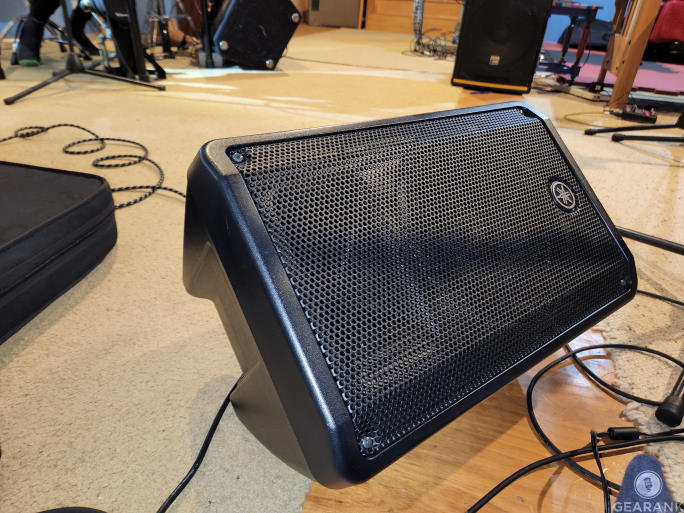
Yamaha DBR10 Front Floor Monitor View
The feel of the cabinet is pretty sturdy for such a lightweight unit and you get the impression it would be able to take a fair bit of impact.
The molded enclosure does look like it could scratch pretty easily and others have reported this happening. But so far I've only experienced a few minor ones as you can (or can't) see from the photo above.
The sound is quite clear, loud, and surprisingly full. It has a smooth frequency response. Its smaller size is handy if you have limited stage space.
One issue is that the mixing panel on the back is difficult to access or see when floor mounted which makes it impractical to adjust settings live.
Some sound guys might see this as a virtue, stopping performers from messing with their settings.
Another criticism I have of the body is that it would have been good to have side handles that you can grip properly. Instead of traditional handles, this stage monitor features a top slot where you can slide your hand in and carry the monitor upright.
The top slot handle design can be functional for some as it reduces weight. But it may not be as secure as some users would prefer and could potentially be tiring for extended use.
Despite my minor concerns, this is a fantastic, affordable, lightweight speaker that sounds great and offers a ton of versatility. It looks good and has been a reliable workhorse for many (including me). And it is backed by Yamaha's 7-year warranty.
It's suitable for use everywhere, from practice to live performance. It can be a good powered monitor or an instrument amp. If you're looking for Yamaha outdoor speakers, the DBR10 can serve as main PA speakers for smaller venues, and it can be coupled with subwoofers for larger venues.
Tech Specs
- LF Driver: 10"
- HF Driver: 1"
- Power Rating (Continuous): 325W (260 LF | 65 HF)
- Power Rating (Dynamic): 700W (500 LF | 200 HF)
- Frequency Range: 55Hz-20kHz (-10dB)
- Maximum Peak SPL: 129dB SPL(Sound Pressure Level)
- Inputs: 2 x XLR/TRS Combo, 1 x Stereo
- Outputs: 1 x XLR
- Mounting: Pole, Floor Wedge
- Weight: 23.2 lbs.
| Website | Source | *Rating Value |
| Gearank | Daniel Barnett | 98/100 |
| Sound On Sound | Paul White | 98/100 |
| YouTube | Gear It First | 96/100 |
Yamaha DBR12
Cons
- Plastic enclosure
- EQ is limited
Pros
- Wide frequency range
- Clear and loud sound
- 2 XLR inputs for use with microphones
The Yamaha DBR12 is a versatile 12" 2-way powered loudspeaker suitable for various applications, offering up to 1000W of dynamic output through its efficient Class D amplifier.
With a 12" woofer and a 1.4" precision compression driver, this speaker achieves a maximum output of 131 dB, delivering clear, dynamic sound. It comes equipped with an ergonomic handle and boasts a lightweight design for easy transport, making it suitable for floor monitoring, front-of-house, or rigging.
The DBR12 offers a wide frequency response from 52Hz to 20kHz, making it effective across all 88 keys, with a lightweight build that delivers crystal-clear and powerful sound without feedback or hum. It features two XLR inputs (mic and line inputs), providing versatility for various sources.
While the DBR12 excels in many aspects, its plastic housing may benefit from a protective cover for added durability. Additionally, some users may find the onboard EQ options limited for fine-tuning their sound.
But this is the best option for those who are looking for a reliable and powerful stage monitor.
Tech Specs
- LF Driver: 12"
- HF Driver: 2"
- Power Rating (RMS): 465W (400W LF, 65W HF)
- Power Rating (Peak): 1000W (800W LF | 200W HF
- Frequency Range: 52Hz-20kHz (-10dB)
- Maximum Peak SPL: 131dB
- Inputs: 2 x XLR/TRS Combo (Mic/Line), 1 x Stereo
- Outputs: 1 x XLR, 1 x TRS
- Mounting: Pole, Floor Wedge, Fly
- Weight: 34.8 lbs.
| Website | Source | *Rating Value |
| Sound On Sound | Mike Crofts | 90/100 |
| Performer Magazine | Benjamin Ricci | 94/100 |
Things to Consider When Buying Stage Monitors
- Powered stage monitors come with built-in amplifiers, while passive ones require a separate amplifier. There's no clear winner between the two, rather, they each have their own advantages over the other. Powered stage monitor speakers make setup simple. Passive monitors give you the freedom to pick an amplifier of your choice. The most practical method is to consider your existing audio equipment when getting stage monitors. If you already have a dedicated amplifier, then get a passive monitor, if none, then go for a powered monitor speaker. Also, remember that powered monitor speakers need to be plugged into a power outlet. We've decided to leave out passive stage monitors entirely since most people are now opting for powered stage monitors due to their ease of use and convenience. When considering your existing audio equipment, know that FOH active speakers can double as active monitors. Some powered monitors also come with DSP features which include speaker protection and even effects.
- The number of floor monitors you need is influenced greatly by the size of the stage and the number of performers. The most ideal is to set up a powered wedge monitor for each performer otherwise they may have to share a stage monitor. A good rule of thumb is to start with two monitor powered speakers for small to medium venues, and add as the need for more arises - you'll often need one dedicated to the drummer as it can be difficult to hear every performer from the back of the stage where the drummer is usually positioned. Remember not to overdo it, save some money for Stage Lights instead. It will also be harder to manage stage volume, especially in small venues. As an example, our Church Sound System has four powered floor monitors.
- The size of the woofer (LF Driver) is significant in that it will dictate the stage monitor's bass handling and projection. You will want smaller stage speakers (8" to 12") for vocals and other common instruments that include guitars and keyboards. While bass-heavy instruments like drums and bass guitars generally require bigger (12" to 15") woofers. Note that some drummers use an additional subwoofer or a dedicated drum monitor for stage monitoring. Portability is an important consideration if you're performance venue constantly changes. To help with that, we have put the weight of each stage monitor listed in the features section.
For buskers, you may want to get a compact battery powered pa speaker. - Many of the best PA speakers can double as stage monitors, making them great bang-per-buck choices. This also means that some stage monitors can serve as backup FOH speakers should your mains have problems. With the appropriate cabling, they can also be used as speakers for music players and mobile devices. Just make sure your electricals are compatible with your speakers' power handling. Note that monitor speakers are designed with fidelity in mind, and this is the same principle that differentiates Studio Monitors vs Speakers, where consumer speakers focus on sound enhancements.
- Stage monitor refers to speakers that can be used as monitors, while floor wedge refers to the shape and position of a stage monitor. Many of today's powered speakers have back wedges that allow them to be positioned as floor wedge monitors. Many also come with built-in DSP that can let you switch the voicing of the speaker to compliment the floor wedge position. Note that not all prefer the wedge position. Some want their monitors on a stand. This is why some prefer smaller monitors with front-mounted controls, as they can be mounted on a mic stand and can be tweaked by the performer. These days, In Ear Monitors are widely considered the best alternative to a floor wedge.
- To prevent noise and Crackling from Speakers, connectivity is another important factor to consider. You'll want power outlets and cables setup properly along with your stage monitors. Speaker connectivity and jack positioning should also be considered. The ability to connect wirelessly is another plus. Bluetooth PA speakers are convenient if you want to wirelessly stream tracks without the need for an Outboard Mixer. This also lets you access modern features like Audio Ducking.
- Some powered monitors are specifically designed for drummers. We feature the best of them in our guide to the Best Electronic Drum Amps / Drum Monitors. Drummers are very particular with monitoring, so lower-quality stage monitors won't cut it for them.
Powered Monitor (aka active) vs Passive Monitor
How many do you need?
Speaker Size and Weight
Can be used as FOH (Front of House) or General Speakers
Differences between a Floor Wedge and a Stage Monitor
Connectivity
The Best Stage Monitors for Drummers
Best Stage Monitor Selection Methodology
The first edition was published in 2016, and the current edition was published on February 19, 2024.
This guide complements our Powered PA speakers guide, focusing on top-rated stage monitors that are readily available at major American music stores. After surveying the major retailers we placed the most promising 37 options on our short-list for closer examination.
We gathered relevant reviews, ratings, and recommendations for each model and fed the data to the Gearank algorithm to produce the rating scores out of 100 that you see above. Over 17,000 sources were processed for this edition. The resulting scores allow us to rank each monitor according to their ratings and we selected the highest-rated ones to recommend above. The list is broken down into sub $300 and sub $500 price categories for convenience. See How Gearank Works for further details on our methods.
About the Author and Contributors
Here are the key people and sources involved in this guide's production - click on linked names for information about their music industry backgrounds.
Lead Author & Researcher
Raphael Pulgar
I've been an audio engineer for 20 years specializing in rock and metal recordings. I also play guitar and produce original music for my band and other content creators.
I'm an experienced audio engineer, not only in the studio but on stage as well. Having done live sound for numerous international touring acts and festivals, I have years of both technical and creative experience in the field and have taught seminars on basic live sound setup in the mid 2010's.
Contributors
Allen Articulo: Supplemental Writing.
Jerry Borrillo & Jerome ARcon: Product Research.
Daniel Barnett: Yamaha DBR10 Review.
Jason Horton: Editing and Illustrating.
Alexander Briones: Editing.
Media
Main/Top Image: Created by Gearank.com using photographs of the QSC CP8, Behringer Eurolive B205D, and Yamaha DBR10.
The individual product images were sourced from their respective manufacturers' websites, promotional materials, or supporting documentation except for the Yamaha DBR10 Floor View which was photographed by Daniel Barnett.
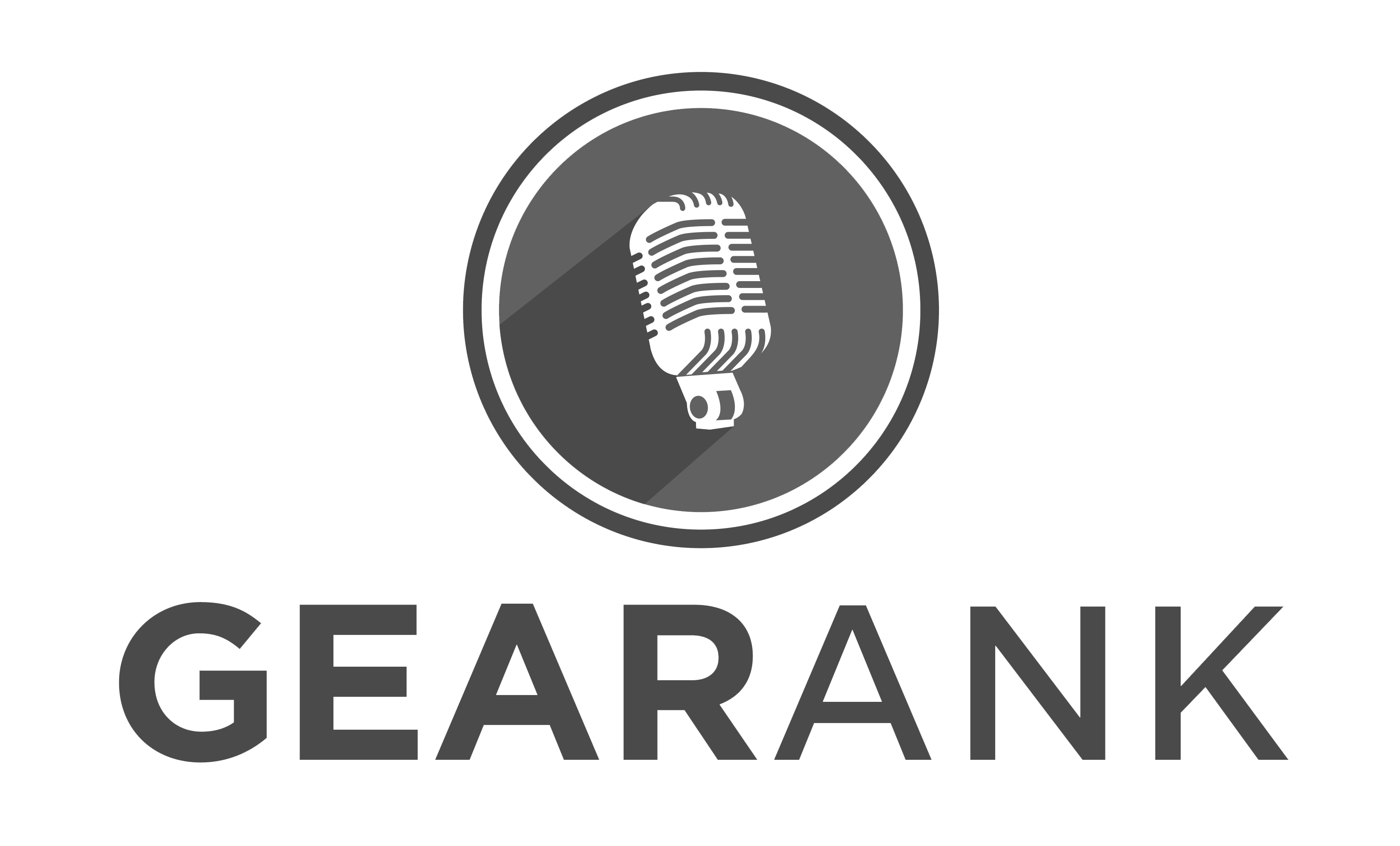
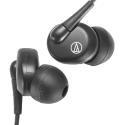
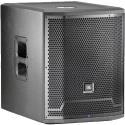
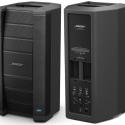
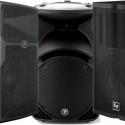
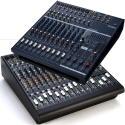
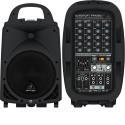
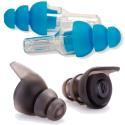
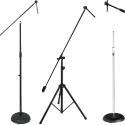
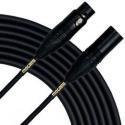
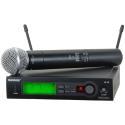
I would love to see continued reviews of passive monitors. For the shows I put on having to run power and signal is an extra headache, plus I can then control the monitors from backstage without interrupting the show.
We’ve removed the Alto TS308 from the recommended list due to it being discontinued.
The Electro-Voice ZLX-12BT came off the recommended list above, due to being out-ranked by the other models on the list, when we published our August 2022 Edition.
The following speakers came off the recommended list above when we published our March 2022 Edition:
Publication of our September 2021 Edition resulted in the following speakers coming off the recommended list above:
The following monitors came off the recommended list above due to our October 2020 update, but you can still read our analysis of them:
Looking for a monitor there are other considerations such as weight and controls on the front, durability. You can sit at a desk and evaluate but when you have to move equipment around and use it during an event these things are as (or almost) important as quality. So I did get much from this.
Got a Yamaha DBR10 and it is great. It’s light, and works great as a stage monitor. Much better than the QSC K10 we were using
As a result of this month’s update, the following speakers were removed from our recommended list above but you can still read what we have to say about them at:
Today we removed the Kustom PA KPC10M because it has been discontinued. You can still read what we had to say about it here: Kustom PA KPC10M Meta Review.
I’d like to have seen more reviews of monitors with a 10″ woofer. I know that Yamaha makes one. I have two of the Kustom 10″ and I like them for my situation which is in a small church with a relatively small staging area. There has to be other 10″ monitors out there under $300.
As part of our December 2017 update we looked very carefully at 10″ speakers, however the passive ones at this size didn’t rate highly enough for us to recommend them despite powered versions with this size woofer rating quite highly with some being recommenced above.
Nice overview. I would add that the Peavey PV 12M horn drivers do blow. From my experience, that happens about every 8-10 years if the monitor is used 3-4 times a week in performance and rehearsal. My bands have pushed these units to the limit. They’ve been impressive and held up to everything we’ve thrown at them.
How do I know they blow every 8-10 years? I date my drivers when I install them, originally because I was curious as to how long they last. I’m glad I started to do that as I doubt I would remember accurately when I had last replaced them.
These guys are extremely durable and will deliver clean, crisp audio for decades. the pole mount allowed us to use one as a main when we blew a speaker once. And like most Peavey gear, these speakers will handle much more power than Peavey says they will.